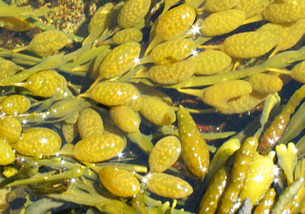This species of rockweed is a long-lived perennial plant, and studies have documented that individuals can live for decades.
Photo Credit: Jessica Muhlin
Ascophyllum nodosum
Common Name: rockweed
Other Common Names: knotted wrack
Plant Functional Group: Algae
Class > Order > Family: Phaeophyceae > Fucales > Fucaceae
